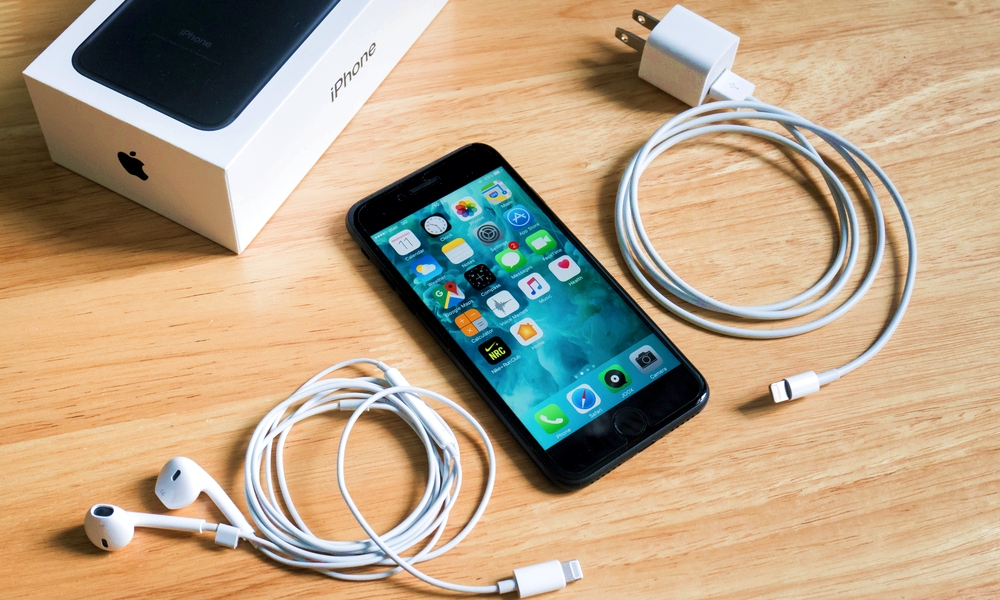Apple’s Chargers and Cables Being Hit by Trump’s 25% Tariffs, iPhone Could Soon Follow
 Credit: Wachiwit / Shutterstock
Credit: Wachiwit / Shutterstock
Toggle Dark Mode
Although the new tariffs being increasingly imposed by U.S. President Donald Trump in the ongoing U.S. trade war with China haven’t impacted most of Apple’s flagship products like the iPhone and iPad, there’s one category that hasn’t escaped the levies: Apple’s adapters, chargers, cables, and cords.
Apple CEO Tim Cook has repeatedly lobbied President Trump to avoid seeing tariffs imposed on Apple products, meeting with Trump last spring, and sending a letter to U.S. Trade Representative Robert Lighthizer in September after a new round of tariffs were being proposed. In the letter, Apple outlined how the round of proposed tariffs would not only hurt Apple’s own business, but would ultimately harm Americans and the U.S. economy.
Undoubtedly as a result of Cook’s efforts, the tariff codes for several significant categories of Apple products, including the iPhone, iPad, and even the AirPods and Apple Watch were ultimately exempted, and so far have continued to avoid new tariffs.
However, as The Verge reports, the codes for “adapters, chargers, cables, and cords” stayed on the list of tariffs, being assigned a 10 percent rate back in September, which of course also affects Apple’s products such as power adapters and Lightning cables. Apple’s iPhone and iPad cases and covers are also included in the tariffs, under another category.
While Apple has been eating that 10 percent cost increase thus far — prices for accessories on Apple’s web site haven’t changed since the tariffs went into effect last fall — last Friday a new round of tariffs resulted in the rate for these categories now jumping to 25 percent, raising questions about whether we may soon see a price increase for these accessories.
Of course, at the price at which Apple sells its own branded adapters and cables, it’s likely that it still retains high enough margins that it can afford to continue bearing the additional costs of the new tariffs, and chargers and iPhone cases are also a very small fraction of the company’s business; last quarter saw a huge jump in Apple’s Wearables, Home and Accessories category, but it’s a safe bet that Apple’s power adapters and cables aren’t accounting for much in a category that also includes the insanely popular AirPods and the Apple Watch.
From a consumer standpoint, even a price increase by Apple on such accessories may not represent a huge problem, as most of these accessories are not exclusive to Apple; USB-C cables can be purchased anywhere, and Apple has widely licensed its proprietary Lightning connector, more recently even including the USB-C version of the cable. Only MacBook power adapters remain exclusively in Apple’s domain at this point.
What’s more troublesome, however, is the spectre of a new round of tariffs that could encompass Apple’s main product lineup. Last fall, President Trump stated that U.S. consumers could handle a 10 percent iPhone tariff “very easily” following that up with a suggestion last week that the new 25 percent tariff hike could be implemented across the board, stating that “325 Billions [sic] Dollars of additional goods sent to us by China remain untaxed, but will be shortly, at a rate of 25%.”
While Friday only saw an increase of the original 10 percent tariff to 25 percent, as Trump promised in his tweet, his comments also suggested that the 25 percent tariffs on the “additional goods” could still be coming. While Trump claims that China is bearing the costs of the new tariffs, this seems questionable at best, and it’s almost certain that Apple has had to account for the additional tariffs on its accessories, either by simply absorbing the additional costs or making changes in its supply chain to otherwise reduce its material and manufacturing expenses. Should U.S. tariffs begin to include iPhones, iPads, MacBooks, Apple Watches, and AirPods, Apple is going to have a much bigger struggle to keep its costs down to a level where it will be able to keep its investors happy if it wants to avoid increasing prices.






